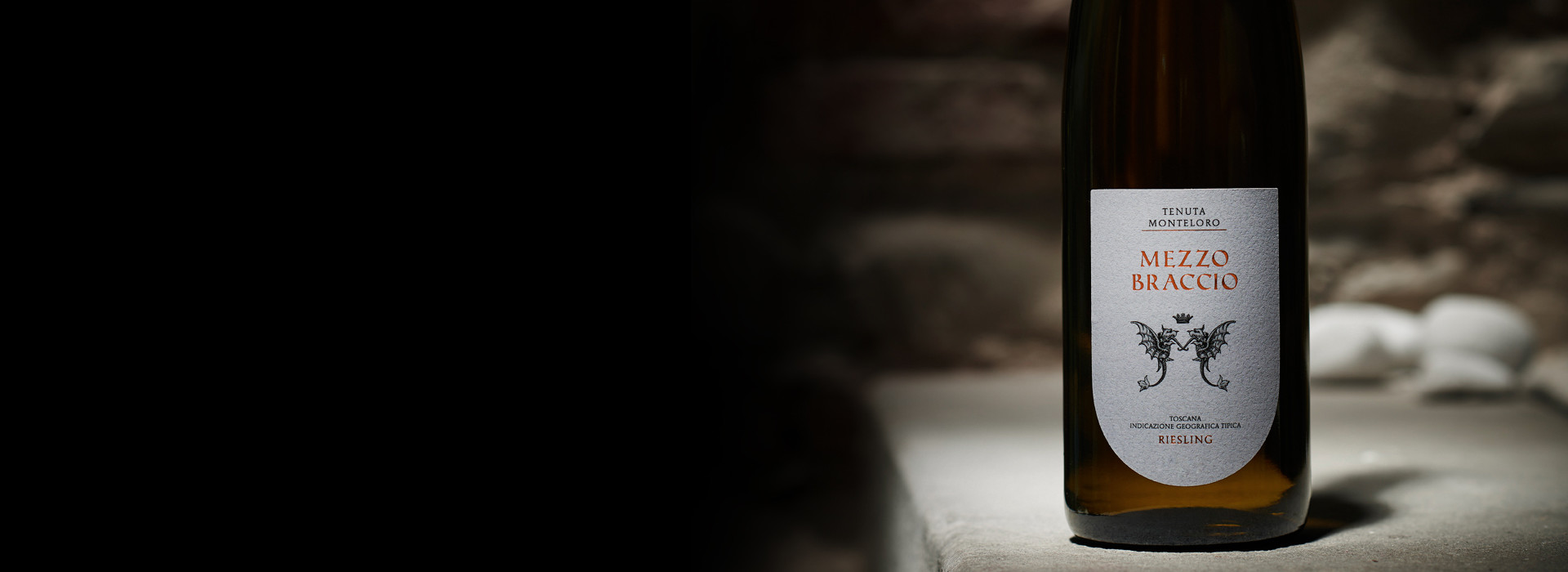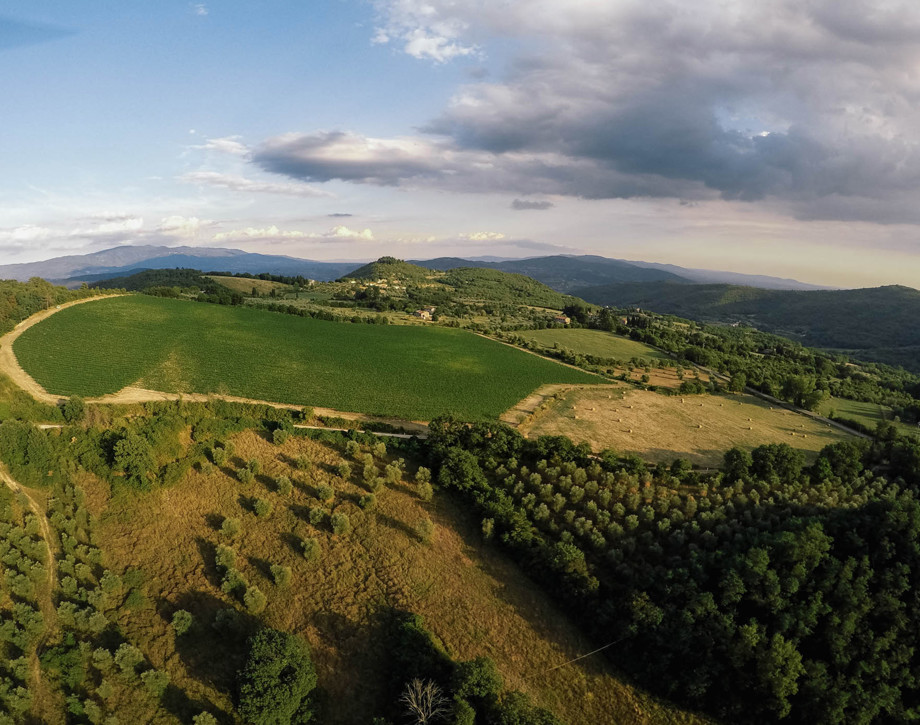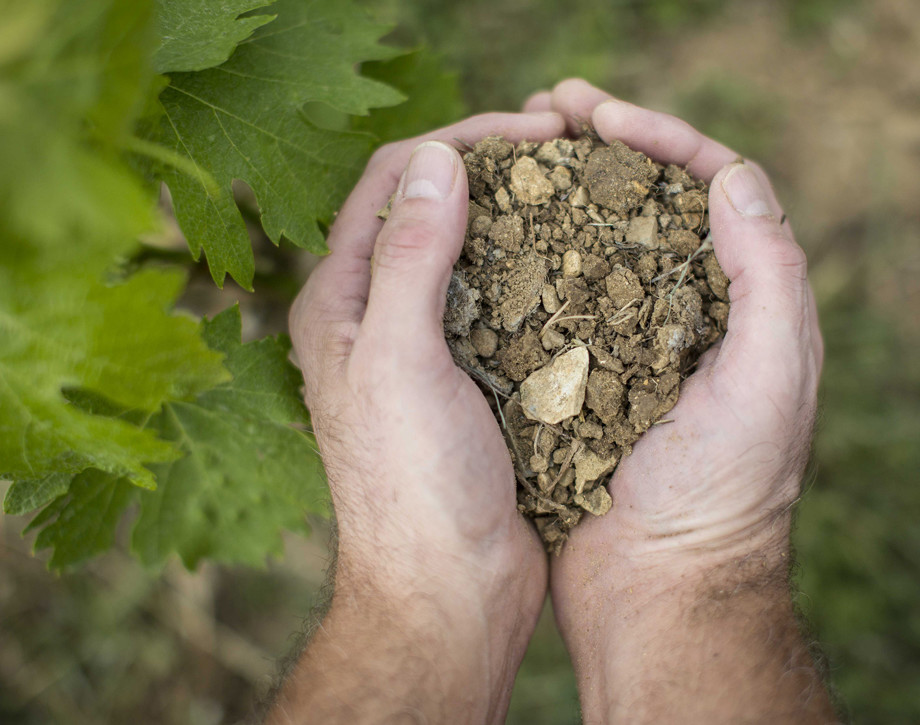Mezzo Braccio

Climate
The 2021 growing season was defined by mild winter conditions and a cold spring. Mid-April registered lower than average seasonal temperatures accompanied by well distributed rainfall that caused the vines to break dormancy later and prompted normal budbreak. The end of spring and beginning of summer saw normal climate trends and scattered rain showers. Occasional precipitation during July, August and part of September helped mitigate temperatures allowing normal vine growth while reducing maximum temperatures. These conditions ensured significant temperature swings between day and night allowing Riesling berries in the Le Fonti vineyard to gradually ripen up until harvest time. Grapes were hand harvested in two separate periods: mid-September in those vineyard parcels where vine growth was vigorous preserving acidity and mineral characteristics and during the first half of October in areas located at a higher altitude whose fruit was riper with greater aromatic concentration.
Vinification
Grapes were destemmed and gently pressed to extract the juice as delicately as possible. Alcoholic fermentation was performed separately for each individual vineyard block in stainless steel vats at temperatures that did not exceed 16 °C (60.8 °F). The wine was then left to age on the lees and was kept at a controlled temperature of 10 °C (50 °F) up until bottling that took place at the end of April 2022. Mezzo Braccio aged in the bottle for an additional period of 24 months.
Historical Data
The Monteloro estate is situated at the foothills of the Apennine chain at the gates of the city of Florence at an average altitude of 1650 feet (500 meters). It extends over close to 1500 acres (450 hectares), more than 230 of which are planted to vineyards. It is a unique area for the cultivation of Riesling, distinguished as it is by a cool climate during the entire year and mineral-rich soils. It is, in Tuscany, an ideal terroir for the cultivation of aromatic white grape varieties. Monteloro, in the past, was an area once inhabited by aristocratic Florentine families such as those of Beatrice Portinari and Dante Alighieri who passed hot summer months here in their manoir houses. It has been recounted, in fact, that this landscape of woods and narrow white country lanes was the inspiration of Dante’s voyage in the “Divine Comedy”. Homage to this tale is rendered in the creature of fantasy, the body of a triton intertwined with the wings of a dragon which form the “M” of the Monteloro estate’s name. The Mezzo Braccio (“half an arm”) name derives from a centuries-old Florentine unit of measurement once used in rural areas for the small parcels of land divided from the better known Braccio Fiorentino (“Florentine arm”). The wine has been produced ever since the 2007 vintage.
Tasting Notes
Mezzo Braccio is light straw yellow in color with green hues. The nose delivers intense notes of green apples, apricots and tropical fruit accompanied by delicate hints of albedo and white flower blossoms together with pleasant nuances of nettle and typical hints of petrol. The palate is fresh with mineral characteristics accompanied by pleasant suppleness.

The Wine
Rheine Riesling develops a unique expression on the Monteloro estate producing pleasing wines with a distinct character. The vines thrive on calcareous clay soils rich in rocky deposits for wines with great complexity. The name “Mezzobraccio” comes from an old Florentine unit of measurement used in rural areas for small parcels of land and the term was coined from the better-known unit of measure the “Florentine Braccio” (Florentine arm).

Climate
The 2021 growing season was defined by mild winter conditions and a cold spring. Mid-April registered lower than average seasonal temperatures accompanied by well distributed rainfall that caused the vines to break dormancy later and prompted normal budbreak. The end of spring and beginning of summer saw normal climate trends and scattered rain showers. Occasional precipitation during July, August and part of September helped mitigate temperatures allowing normal vine growth while reducing maximum temperatures. These conditions ensured significant temperature swings between day and night allowing Riesling berries in the Le Fonti vineyard to gradually ripen up until harvest time. Grapes were hand harvested in two separate periods: mid-September in those vineyard parcels where vine growth was vigorous preserving acidity and mineral characteristics and during the first half of October in areas located at a higher altitude whose fruit was riper with greater aromatic concentration.
Vinification
Grapes were destemmed and gently pressed to extract the juice as delicately as possible. Alcoholic fermentation was performed separately for each individual vineyard block in stainless steel vats at temperatures that did not exceed 16 °C (60.8 °F). The wine was then left to age on the lees and was kept at a controlled temperature of 10 °C (50 °F) up until bottling that took place at the end of April 2022. Mezzo Braccio aged in the bottle for an additional period of 24 months.
Historical Data
The Monteloro estate is situated at the foothills of the Apennine chain at the gates of the city of Florence at an average altitude of 1650 feet (500 meters). It extends over close to 1500 acres (450 hectares), more than 230 of which are planted to vineyards. It is a unique area for the cultivation of Riesling, distinguished as it is by a cool climate during the entire year and mineral-rich soils. It is, in Tuscany, an ideal terroir for the cultivation of aromatic white grape varieties. Monteloro, in the past, was an area once inhabited by aristocratic Florentine families such as those of Beatrice Portinari and Dante Alighieri who passed hot summer months here in their manoir houses. It has been recounted, in fact, that this landscape of woods and narrow white country lanes was the inspiration of Dante’s voyage in the “Divine Comedy”. Homage to this tale is rendered in the creature of fantasy, the body of a triton intertwined with the wings of a dragon which form the “M” of the Monteloro estate’s name. The Mezzo Braccio (“half an arm”) name derives from a centuries-old Florentine unit of measurement once used in rural areas for the small parcels of land divided from the better known Braccio Fiorentino (“Florentine arm”). The wine has been produced ever since the 2007 vintage.
Tasting Notes
Mezzo Braccio is light straw yellow in color with green hues. The nose delivers intense notes of green apples, apricots and tropical fruit accompanied by delicate hints of albedo and white flower blossoms together with pleasant nuances of nettle and typical hints of petrol. The palate is fresh with mineral characteristics accompanied by pleasant suppleness.

Tenuta Monteloro
The Monteloro estate is located near Florence, just behind Fiesole on the foothills of the Apennine mountain range at an altitude of 500 meters (1640 feet) above sea level. The property extends over 600 hectares (1500 acres) with 122 planted hectares (301 acres). This is a unique area in Tuscany; an ideal terroir for producing white wines in particular Riesling and Pinot Bianco. The vineyards enjoy a year round cool climate on mineral rich soils. At one time, Monteloro was home to aristocratic Florentine families, such as Beatrice Portinari and Dante Alighieri, who spent summers in the countryside vacationing in their country manor homes. According to legend, this unique countryside of forests and narrow white country trails was the inspiration for Dante in his travels in the Divine Comedy. Fantastic mythological creatures possessing a triton’s body and dragon’s wings seem to pay their respects to the territory’s legacy and form the letter “M”, logo of the Monteloro estate.

Soil
Clay soils, tending towards calcareous with notable presence of very fine gravel.


















